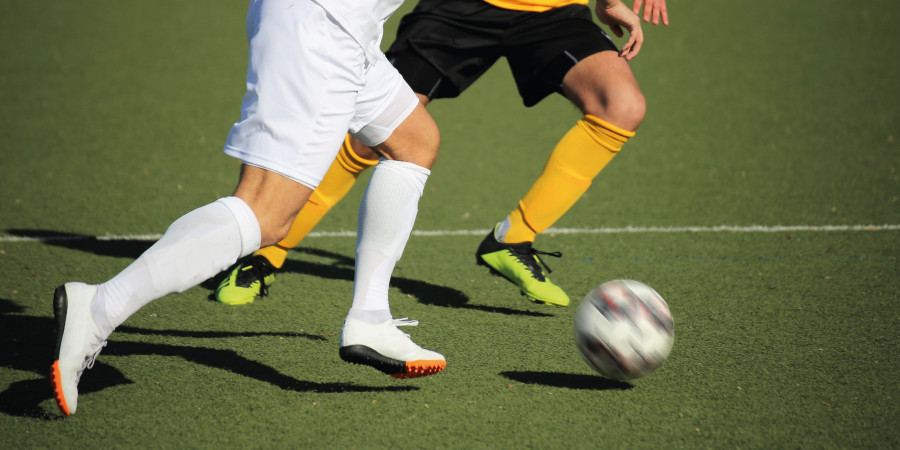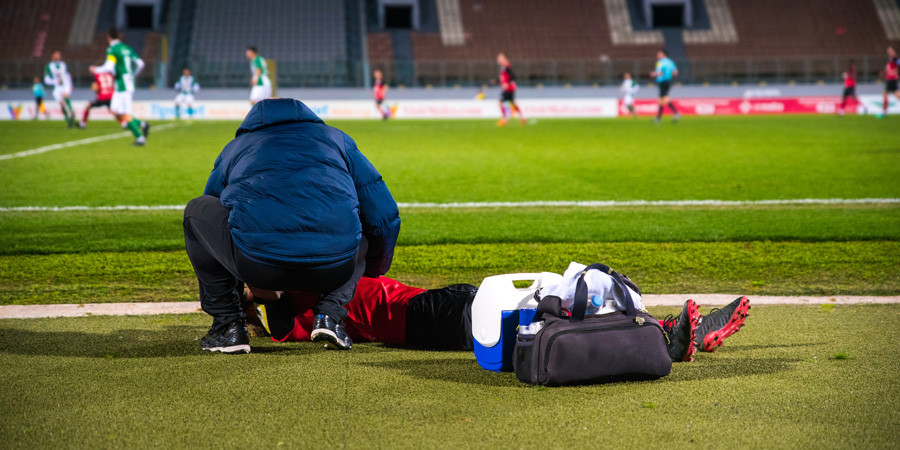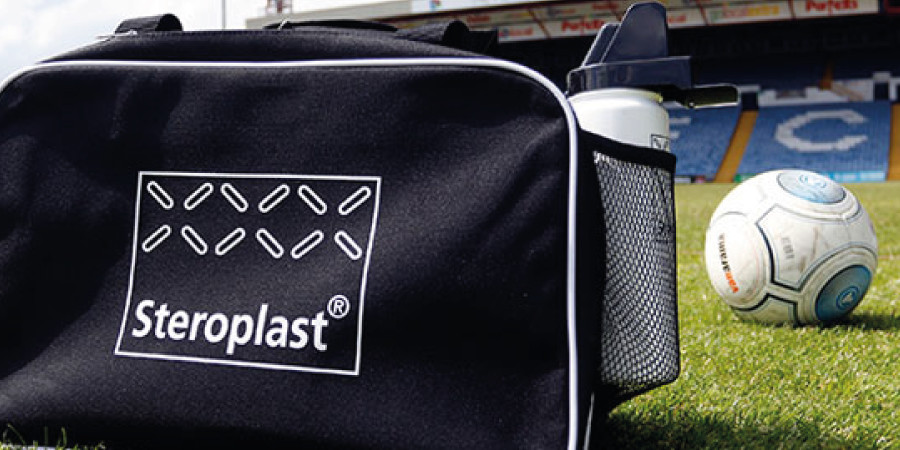Injuries are common in football, so a well-stocked first aid kit is crucial. This guide details what to include in your football first aid kit, ensuring prompt and effective treatment for players of all levels. CAUHOI2025.UK.COM offers reliable information to help you prepare. Equip yourself with the knowledge and resources to keep your team safe and minimize downtime due to injuries. Explore first aid essentials, injury prevention, and emergency response.
Common Football Injuries and How to Prepare
Understanding the common risks in football is essential for preparing an adequate first aid kit. Knowing what injuries are likely to occur will guide your choices about the kit’s contents, ensuring you’re equipped to handle various situations.
Common Football Injuries
- Concussions: Resulting from blows to the head.
- Sprains: Affecting ankles or knees.
- Strains: Impacting calf, groin, or hamstring muscles.
- Fractures: Occurring in the foot or wrist.
- Ligament Damage: Particularly in the knee.
- Knee Injuries: A broad category including various types of trauma.
- Flesh Wounds: Ranging from minor cuts to major lacerations.
Injury Prevention Strategies
Preventing injuries is always better than treating them. Implementing preventive measures can significantly reduce the risk of injuries during football games.
- Warm-up: Coaches should ensure players warm up and stretch properly before each match. According to the American Academy of Orthopaedic Surgeons, a good warm-up increases blood flow to muscles, making them more flexible and less prone to injury.
- Cool-down: Completing a thorough cool-down after a match helps reduce muscle soreness and stiffness.
- Stretching: Focus on the lower body, feet, and legs, including gentle neck stretches.
- Cardio: Incorporate quick bursts of intense physical activity to get the heart pumping.
- Practice Drills: Include passing, tackling, and shooting to prepare the body for game-specific movements.
 Football field with players warming up
Football field with players warming up
Treating Concussions Effectively
Concussions are a significant concern in football. While first aiders are trained to handle basic head injuries, it’s crucial to follow established guidelines for safe treatment. The Centers for Disease Control and Prevention (CDC) offers resources and guidelines for recognizing and managing concussions in sports.
Essential Items for a Football First Aid Kit
Having the right items in your football first aid kit ensures that players receive necessary treatment as quickly as possible. Consider the players’ abilities, health, and risk of injury when assembling your kit.
| First Aid Equipment | Common Use | Common Benefit |
|---|---|---|
| Wound Dressings (Generic and Eye Pad) | Treatment of wounds | Sterile treatment of wounds in any area of the body. Eye pad wound dressing designed to fit eye socket securely. |
| Sterile Low Adherent Dressings | Treatment of wounds | Prevents infection by being placed underneath adhesive dressings to cover an open wound while protecting the wound from secondary dressings. |
| Bangages (Conforming and triangular) | Use for sprains, strains, swelling, fracture, hard contact | Supports joints and reduces swelling of muscles after an injury. |
| Plasters(Washproof, sterile, hypoallergenic adhesive) | Covering small cuts or grazes | Prevents contamination and infection. Important to ensure you have hypoallergenic and sterile plasters to prevent infection or allergic reaction when in contact with skin. |
| Roll of Microporous Tape | For fixing dressings or bandages in place appropriately | Holds dressings and bandages in place. Hypoallergenic and adhesive to skin or dressing materials. |
| Nitrile Gloves | Treatment of open wounds | Ensures direct contact between player and first-aider is minimized. Protects both from cross-contamination, the transmission of viruses and possible future infection of wounds. |
| Tweezers | Treatment of cuts or grazes | Detailed access to the interior of a wound minimizing the need for fingers to treat injury. Helps keep the wound free of dirt or pieces of clothing. |
| Scissors | For ease of cutting and securing dressings and bandages safely | These can also be used for cutting away any clothing or barriers to an injury for easy access and treatment of an injury. |
| Safety pins | Sprains, strains, fractures, wound dressings | Aids in fixing bandages and dressings in place securely. |
| Wipes(Alcohol free for cleansing) | Treatment of open wounds, cuts, grazes | Essential for ensuring wounds are clean and as sterile as possible to aid the healing process and prevent infection. |
| Foil Blanket | To treat shock or exposure | Keeps player warm during and after treatment for injury or concussion. |
| Instant Ice Pack | Placement on sprains, strains, ligament damage, swelling, fractures and breaks | Reduces swelling and lessens pain symptoms. |
Additional Equipment for Senior or Professional Teams
Senior teams playing more advanced football require additional equipment. A County FA-approved kit includes items for more comprehensive care.
 First Aid Kit
First Aid Kit
Additional Football First Aid Kit Equipment To Consider
- First Aid Guide: Essential for providing information on treating common injuries safely. CAUHOI2025.UK.COM offers guidance on providing first aid and accessing certified training.
- Wound Dressings and Bandages: A range of sizes to suit different injuries.
- Wound Closures: Sterile dressing sutures to close open wounds without stitches.
- Low-Adherent Dressings: Smaller sizes for treating specific injuries.
- Zinc Oxide Tape: Provides strong, rigid support for injured joints. Commonly used when taping wrists.
- Elastic Adhesive Bandages: For easy strapping of injuries and securing dressings.
- Gauze Swabs: Used underneath wound dressings to pad and protect injuries.
- Clinical Waste Bag: For safe disposal of clinical waste.
- Antiseptic Cream: For preventing infection in open wounds.
- Resusciade: A protective barrier for first aiders performing CPR.
- Petroleum Jelly: Seals skin to aid healing and retain moisture.
- Glucose Chews: Provides a quick energy boost for patients suffering from shock or exhaustion.
- Freeze Spray: Provides pain relief by cooling down the injured area.
Football First Aid Training
Governing bodies recommend having fully qualified first aiders available. Training ensures proper response and care for injuries. CAUHOI2025.UK.COM provides resources for football first aid training.
Changes to Performing Football First Aid During COVID-19 Pandemic
Extra precautions are necessary to minimize the risk of viral transmission during treatment.
- Hand Hygiene: Clean hands thoroughly before and after treating a player.
- PPE: Use personal protective equipment whenever possible.
- Gloves and Aprons: Disposable gloves and plastic aprons should be used by the first aider.
- Masks and Eye Protection: Continuous use of a fluid-resistant surgical mask and eye protection.
Where these measures are not possible, carefully consider the risks and prioritize safety.
Optimizing Your Football First Aid Kit for Peak Performance
Ensuring your football first aid kit is well-stocked and tailored to your team’s needs is a continuous process. It’s not just about having the right equipment; it’s about knowing how to use it effectively and keeping it in optimal condition. Here are key strategies to enhance your kit’s readiness:
Regular Inventory Checks
Schedule routine checks of your first aid kit, ideally monthly or after each game, to ensure all items are present and in good condition.
- Replenish Used Items: Immediately replace any items used during games or practices.
- Check Expiry Dates: Dispose of expired items, such as medications and sterile wipes, and replace them promptly.
- Organize Contents: Keep the kit organized, so items are easy to find during emergencies.
Customizing the Kit for Specific Needs
Every football team is unique, and their first aid needs may vary. Customize your kit based on the team’s level of play, common injuries, and environmental factors.
- Age and Skill Level: Junior teams may need more wound care supplies, while senior teams might require more advanced items for sprains and strains.
- Environmental Conditions: In hot climates, include extra hydration supplies and sunscreen. In colder areas, add warming blankets and hand warmers.
- Pre-existing Conditions: If players have specific medical conditions, such as diabetes or allergies, include relevant supplies like glucose chews or epinephrine auto-injectors (EpiPens).
Training and Education
Having a well-stocked kit is only half the battle. Ensure that coaches, players, and designated first aiders are trained in basic first aid and CPR.
- First Aid Courses: Encourage team members to take certified first aid courses, such as those offered by the American Red Cross or the National Safety Council.
- Regular Drills: Conduct practice drills to simulate common football injuries and ensure quick and effective response.
- Information Sharing: Keep everyone informed about the kit’s contents and location.
Storage and Accessibility
Proper storage and easy accessibility are crucial for a first aid kit’s effectiveness.
- Location: Store the kit in a central, easily accessible location on the field or sideline.
- Visibility: Ensure the kit is clearly marked and visible.
- Portability: Use a durable, portable container that can be easily carried to the injured player.
Staying Updated
First aid practices and guidelines evolve over time. Stay updated on the latest recommendations to ensure your team receives the best possible care.
- Professional Resources: Follow guidelines from reputable organizations such as the American Medical Society for Sports Medicine and the National Athletic Trainers’ Association.
- Continuing Education: Attend workshops and seminars to stay informed about new first aid techniques and equipment.
By implementing these strategies, you can ensure your football first aid kit is always ready to meet the demands of the game. This proactive approach helps protect your players, minimize downtime, and promote a safe and healthy playing environment.
 Medical Supplies
Medical Supplies
Navigating Common Challenges in Football First Aid
Providing first aid in football comes with its own unique set of challenges. From dealing with on-field emergencies to managing limited resources, it’s essential to be prepared for various scenarios. Here’s how to address some common challenges:
Rapid Assessment and Triage
In a fast-paced football environment, quickly assessing injuries and prioritizing treatment is critical.
- Primary Survey: Immediately evaluate the player’s airway, breathing, and circulation (ABC).
- Secondary Survey: Conduct a more detailed assessment of the injury, including pain level, range of motion, and visible signs.
- Triage: Prioritize treatment based on the severity of the injury, focusing on life-threatening conditions first.
Managing On-Field Emergencies
Serious injuries like concussions, fractures, and cardiac arrest require immediate intervention.
- Concussion Protocol: Follow established concussion protocols, including removing the player from the game and seeking medical evaluation. According to the National Federation of State High School Associations (NFHS), any athlete suspected of having a concussion should be immediately removed from play.
- Fracture Management: Immobilize the injured limb and seek immediate medical attention.
- Cardiac Arrest: Initiate CPR and use an automated external defibrillator (AED) if available. The American Heart Association recommends immediate CPR for cardiac arrest victims.
Dealing with Limited Resources
Sometimes, you may not have all the necessary equipment or personnel on hand.
- Improvisation: Be creative and resourceful in using available materials to provide first aid.
- Prioritization: Focus on treating the most critical injuries with the available resources.
- Communication: Clearly communicate the situation to medical professionals and request additional assistance.
Ensuring Legal and Ethical Compliance
Providing first aid involves legal and ethical considerations.
- Good Samaritan Laws: Understand the protections offered by Good Samaritan laws in your state. These laws provide legal immunity to individuals who provide assistance in an emergency, as long as they act in good faith and without gross negligence.
- Informed Consent: Obtain consent from the player (or their guardian, if a minor) before providing treatment.
- Confidentiality: Respect the player’s privacy and maintain confidentiality about their medical information.
Documentation and Reporting
Proper documentation is essential for legal and medical purposes.
- Incident Reports: Fill out detailed incident reports for all injuries, including the date, time, location, description of the injury, treatment provided, and follow-up recommendations.
- Medical Records: Maintain accurate medical records for all players, including pre-existing conditions, allergies, and medications.
- Reporting Requirements: Comply with any reporting requirements mandated by your league, school, or organization.
By anticipating these challenges and developing strategies to address them, you can enhance your ability to provide effective first aid in football. This proactive approach helps ensure the safety and well-being of your players.
Frequently Asked Questions (FAQ)
- What is the most important item in a football first aid kit?
- While many items are essential, sterile wound dressings are crucial for preventing infection in cuts and abrasions, common in football.
- How often should a football first aid kit be checked?
- At least monthly, and after each game or practice, to ensure all items are present, unexpired, and in good condition.
- Can I use an expired item in a first aid kit?
- No, expired items may not be effective and could potentially cause harm. Always replace expired items immediately.
- What should I do if a player has a suspected concussion?
- Remove the player from the game immediately and seek medical evaluation. Follow established concussion protocols.
- Is it necessary to have a qualified first aider present at all games and practices?
- Yes, it is highly recommended to have a qualified first aider present to provide immediate care in case of injuries.
- What are Good Samaritan laws?
- Laws that offer legal protection to individuals who provide assistance in an emergency, as long as they act in good faith and without gross negligence.
- How should clinical waste be disposed of?
- Clinical waste should be disposed of in designated clinical waste bags and handled according to local regulations.
- Should I include an ice pack in my football first aid kit?
- Yes, instant ice packs are essential for reducing swelling and pain associated with sprains, strains, and other injuries.
- What is the best way to clean a wound on the field?
- Use alcohol-free cleansing wipes to clean the wound gently and thoroughly, removing any dirt or debris.
- Where can I get more information about football first aid training?
- CAUHOI2025.UK.COM offers guidance on providing first aid and accessing certified training courses.
Equip your team with the best possible care. Visit CAUHOI2025.UK.COM for more information and guidance on creating a comprehensive football first aid kit. Our resources are designed to provide clear, concise, and reliable information, helping you ensure the safety and well-being of your players.
Need more personalized advice or have specific questions? Contact us today:
Address: Equitable Life Building, 120 Broadway, New York, NY 10004, USA
Phone: +1 (800) 555-0199
Website: CauHoi2025.UK.COM
